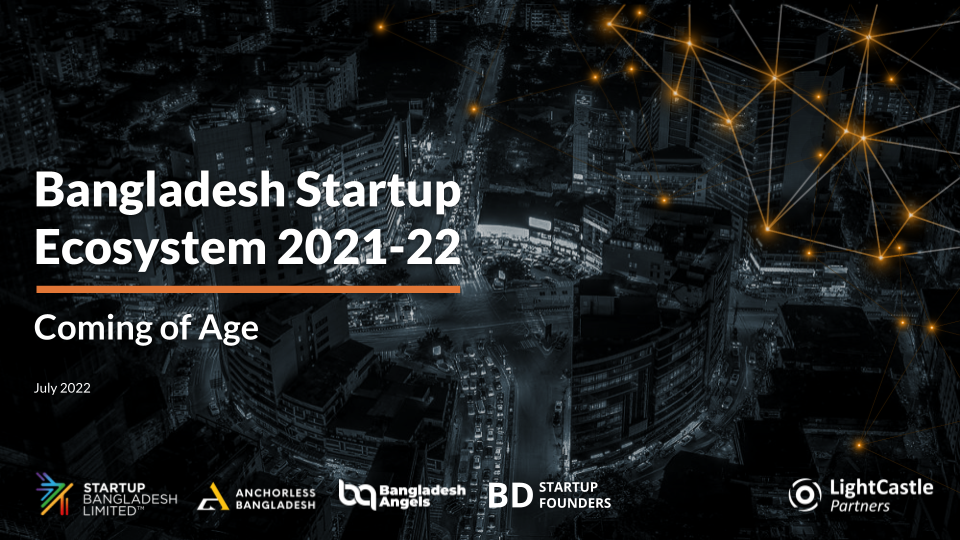GET IN TOUCH
- Please wait...

Over the last 10 years whenever I have talked with small business entrepreneurs across Bangladesh (be it a tech company amid the ‘hustle-bustle’ of the Dhaka Startup Ecosystem or a peri-urban enterprise trying to build jute diversified/derivative products or a rural micro-firm trying to set-up an Ag-processing unit) – access to capital (especially access to growth capital) comes up as a key challenge.
So where is the gap happening? – in a country where there are close to 60 Banks (many with active rural presence/agent banking), 34 Non-Bank Financial Institutions, 760 Microfinance organizations, 17 Alternative investment companies. The challenges evolve from institutional structure not being aligned in investment patient/risk capital, infrastructure-wise difficult to go downstream and invest in early-stage companies, absence of partnerships, and interoperability between different forms of financial institutions.
If you look at the diagram above you can see what kind of financing is available for different stages of enterprises. For micro and small enterprises – the options are mostly leverage – microfinance which besides their high cost of funds also requires frequent payments (not necessarily matching the enterprises’ cash cycle) and often require investment in a savings scheme, agent banks also at the moment are more focused on deposit mobilization compared to disbursing credit. And here is the gap while early-stage enterprises/entrepreneurs require patient or risk capital which we often term as “seed” round is “few-and-far” at the moment. This is where blended capital can make a difference.
Blended capital is essentially a mix of government/non-profit grants, equity investments, and loans put into a company. If sequenced rightly and at the right proportion this can create sustainable growth for the entrepreneurship ecosystem. So how would it work exactly, here’s an idea:
At the very first stage – Governments, NPOs, development partners, and foundations (corporate or otherwise) provides the risk capital – which is often can be a grantor can also be done using creative instruments like “revenue or profit-sharing (this is a very interesting instrument since this acts as a self-liquidating asset for the investors and at the same time vests them in the growth of the enterprise)” or things like SAFE (“Simple Agreement for Future Equity”) or any instrument that shares risk with the entrepreneur (this is different from equity investment from a VC which usually ties in exit clauses at the end of 5 years and will come at a later stage). This will help the micro-enterprise get things off the ground, experiment, and have a longer time period (1.5 to 2 years) to build the business on solid fundamentals. Additionally, this also de-risks investment for the next stage and also aligns the enterprise at an early age to think about inclusiveness and impact-oriented (accomplishing the foundations, government, or grant providing organizations impact goals).
At the very next stage – once the firm has been established to a certain extent like having a product-market fit, good starting team members in key positions, and having a growth plan in place. This is where – a) Impact investing, VC investing, angel investing can take place – this can often come in forms of equity or quasi-equity or even different forms of convertible instruments (you can view a list of alternative investment instruments here) and b) smaller form of debt capital to meet working capital needs to the business from micro-finance but maybe with flexible terms like moratorium periods or matching loan installments with the cash-cycle of the business so as not to burden the business.
At the final stage – the firm has grown, has stable cash flow, and now needs additional working capital and it doesn’t make sense to dilute the ownership of the company with either equity investments or even quasi-equity or convertibles which though doesn’t dilute ownership but early-stage investors who use this instruments are more hands-on and has a stronger impact on the decisions and direction of the company. This is where banks, NBFIs (non-bank financial institutions like leasing companies) can come in with a) overdraft facilities and loan-on-demand products to help manage cash-flow of the company and b) provide term-capital for expansion (as the company now has assets they can put in collateral and has a track record). The first two stages of investments have a kind of de-risked capital for the banks/NBFIs and have also allowed the company to grow into a client for the mainstream financial sector.
The tricky part is different kinds of investors with different agendas need to work together, some more impact-focused while others are commercial in nature, (grant-giving organizations vs Impact Investors vs VCs vs Banks). Each stage de-risks investments for the next stage and allows the business ecosystem to grow not only in value but also in creating sustainable impact – an organization that at an early stage has developed an impact DNA and best practices are likely to continue that vintage. It’s time for philanthropic, impact, and commercial capital to work together that will create the next generation of entrepreneurs who are not only building businesses but responsible businesses.
 |
If you are interested to learn more about the Startup Ecosystem of Bangladesh
|
Bijon Islam, the CEO, and Silvia Rozario, Senior Business Consultant at LightCastle Partners, have prepared the write-up. For further clarifications, contact here: [email protected]
Our experts can help you solve your unique challenges
Stay up-to-date with our Thought Leadership and Insights